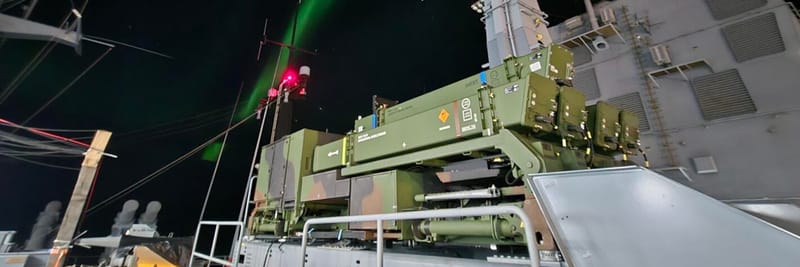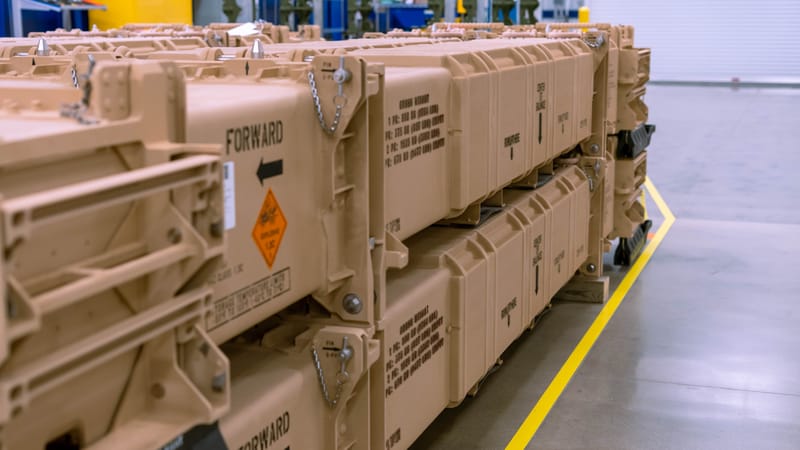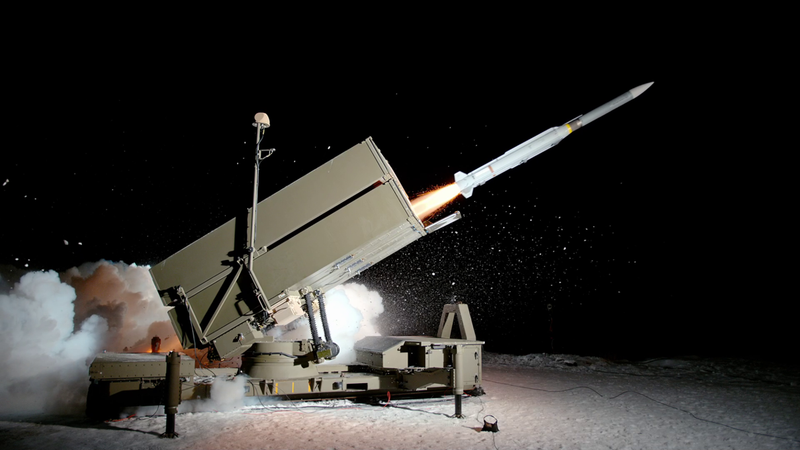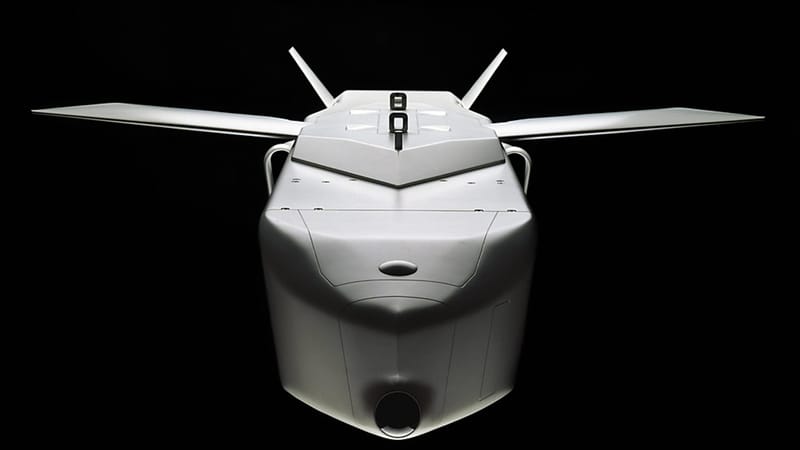Germany Approves 35 mm C-RAM Layer to Counter Drone Swarms
Germany is reintroducing a 35 mm cannon-based C-RAM tier to counter drone swarms and rocket salvos without bankrupting itself on missile defense—delivering a rapid-fire inner layer between Skyranger patrols and IRIS-T batteries by 2028.
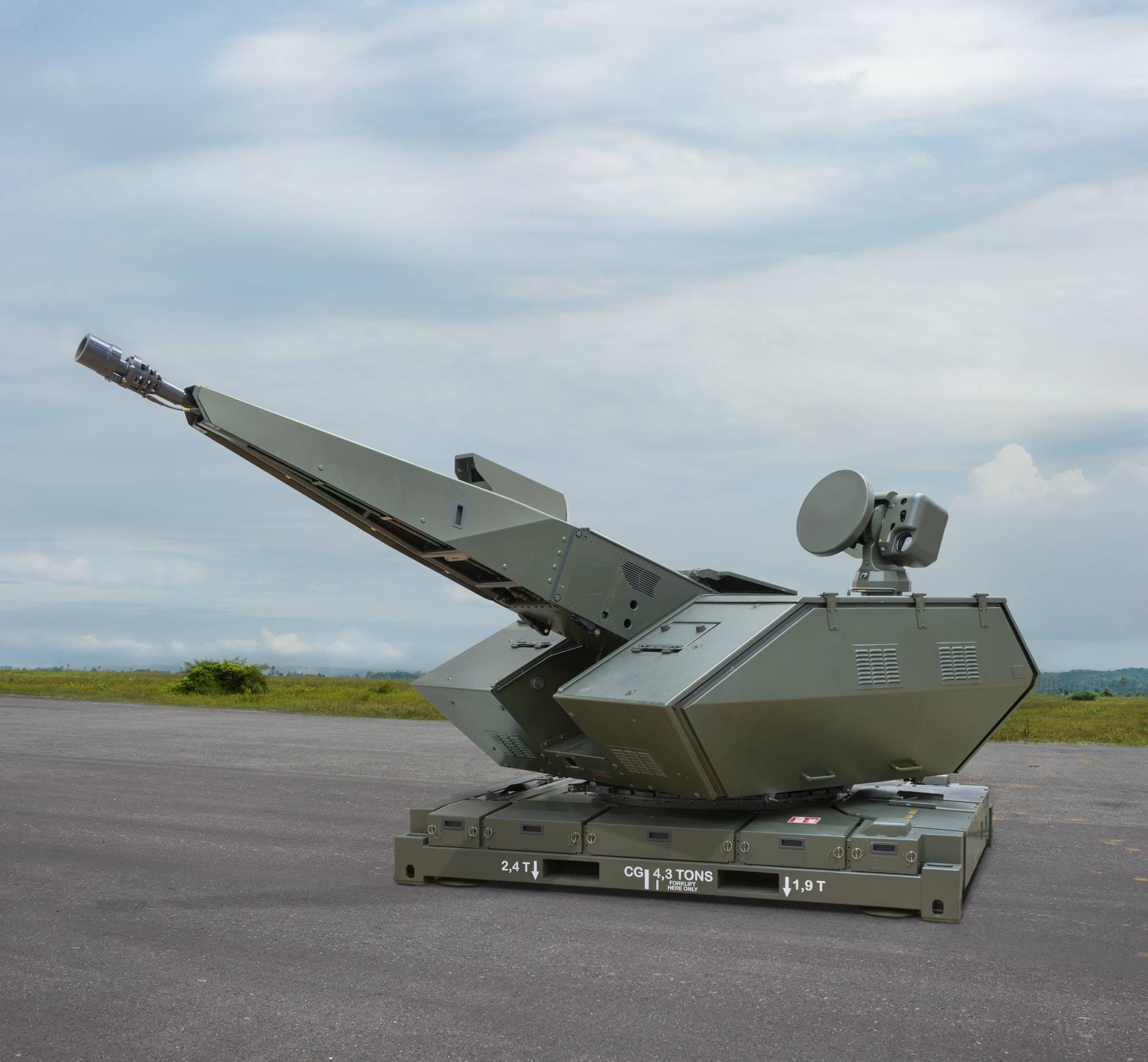
Editorial Note: This report on Germany's Nah- und Nächstbereichsschutz (NNbS) program is based on information available as of May 2025. Defense procurement is dynamic; specific system selections, timelines, and configurations are subject to change as the program matures. The projections herein reflect our current understanding; not yet verified parts should be viewed as forward-looking.
Facing a drone-saturated battlespace and the soaring cost-per-shot of missile interceptors, Germany’s new 35 mm cannon-based C-RAM layer aims to restore an affordable, high-volume inner shield to the Bundeswehr’s air-defense architecture—plugging the critical gap between mobile Skyranger escorts and IRIS-T missile batteries by 2028.
💡 What it means
At 2025 prices, €1 spent on 35 mm ammunition delivers about the same intercept effect as €15–30 worth of short- to mid-range missiles—and the gap widens even further vs. long-range strategic SAMs.
Even when factoring in the residual need for missile interceptors to counter high-altitude or leaker threats, Germany’s planned C-RAM tier could still reduce the overall consumable cost of a mass-drone raid by up to 90%, depending on engagement conditions and threat profile.
Planning baseline (all 2025 €): € 560 / 35 mm round (BAAINBw contract, DefenseNews), ~40 rounds per kill at an estimated Pₖ of 0.60, based on historic MANTIS system data and comparable threat profiles; missiles € 0.25 M (Tier-1 IRIS-T/ESSM) and € 1.5 M (Tier-2 PAC-3 MSE) at Pₖ 0.90. Threat counts from Reuters 22 Mar 2024, Stars & Stripes 16 Jan 2025, Jerusalem Post 09 Jan 2025 underpin the ~90 % consumable-cost saving.

Overview
Germany is preparing to reintroduce a cannon-based Counter-Rocket-Artillery-Mortar (C-RAM) layer under Teilprojekt 3 of the Nah- und Nächst-bereichsschutz (NNbS) initiative. Scheduled to enter delivery from 2028, the system aims to close a longstanding gap in the Bundeswehr’s short-range air defense posture—providing rapid-reaction, high-volume point protection against loitering munitions, drone swarms, and indirect precision fires.
While final platform selection remains pending, credible indicators from Bundeswehr planning documents and industry demonstrations suggest a 35 mm cannon-based solution, featuring radar cueing and programmable airburst munitions. The most likely candidates include derivatives of Rheinmetall’s Oerlikon Revolver Gun Mk3 or evolved configurations based on the retired MANTIS system.
Functionally, this new CRAM layer would bridge the doctrinal gap between Skyranger 30 mobile platforms and mid-tier missile interceptors such as IRIS-T SLS/SLM—restoring a kinetic hard-kill tier that has been absent from Germany’s arsenal since the phase-out of Gepard.
Program Status
In January 2024, the ARGE NNbS consortium—comprising Rheinmetall, Diehl Defence, and Hensoldt—received a €1.2 billion development contract to build out Germany’s short- and very-short-range air defense capability. Program milestones include:
- Prototype delivery by 2027
- Initial serial deliveries starting in 2028
- Full integration into Bundeswehr IAMD networks by 2029–2030
While the procurement of exactly four CRAM units has not been formally confirmed in Bundeswehr documentation, this number has circulated in expert analyses and aligns with force protection requirements at the brigade or division level.
Follow-on tranches beyond the initial units remain possible, particularly if integration trials validate CRAM as a scalable fixed-site and maneuver element within NATO force packages.
Projected Technical Profile
Although system specifications remain unconfirmed, the projected configuration reflects plausible integration paths based on current NATO program trends, industry demonstrations, and Rheinmetall’s known product lines. The system is likely to be integrated into the Rheinmetall Skynex fire-control ecosystem. These assessments are notional and should be interpreted as indicative rather than definitive.
| Parameter | Likely Specification |
|---|---|
| Caliber | 35 mm (with programmable airburst ammunition) |
| Weapon Platform | Oerlikon Revolver Gun Mk3 or equivalent Rheinmetall derivative |
| Sensor Suite | X-band or Ku-band radar with EO/IR tracking support |
| Engagement Mode | Fully automated, radar-cued, programmable munitions |
| Target Set | Loitering munitions, quadcopters, PGMs, rockets/artillery mortars |
| Mount Configuration | Containerized or semi-mobile; future Boxer integration plausible |
| C2 Integration | Networked into Bundeswehr’s NNbS digital backbone via Skynex and Ground-Based Air Defense (GBAD) |
Operational Role & Integration
The C-RAM capability is expected to serve as the innermost ring of Germany’s layered air defense mesh. It complements:
- Skyranger 30 for mobile VSHORAD escort of maneuver brigades
- IRIS-T SLS/SLM for fixed and mobile mid-range missile defense
Doctrinally, the CRAM layer will likely be optimized for fixed-site defense of:
- Airbases and rotary-wing assets
- Fuel, supply, and ammunition hubs
- Brigade- and corps-level command nodes
This shift reflects NATO’s emerging consensus on dense SHORAD layering, where mobility, autonomy, and saturation resilience outweigh range extension at the tactical tier.
Limitations & Risks
While the 35 mm C-RAM layer promises an affordable and rapid-response capability, several limitations merit attention. Its effectiveness remains contingent on:
- Saturation limits: Even at high firing rates, kinetic solutions like 35 mm AHEAD munitions may be overwhelmed by massed or decoy-enhanced drone raids.
- Engagement envelope: The system is optimized for low to medium altitude threats. Loitering munitions with evasive flight paths or terrain masking may elude effective interception.
- Automation dependency: Radar cueing and fire control systems require integration maturity; misclassification or false positives under swarm conditions could degrade performance.
- Logistics and sustainment: Ammunition resupply, system reloading, and thermal management under sustained fire conditions are underexamined in public planning documents.
Finally, platform mobility remains in question. If limited to semi-fixed or containerized mounts, CRAM systems may struggle to keep pace with maneuvering elements unless integrated on mobile platforms such as Boxer—limiting near-term utility for dynamic brigade-level operations.
Strategic Context
Layered Architecture, Rebalanced
The Bundeswehr’s IAMD rebuild now spans three functional tiers:
- VSHORAD (e.g. Skyranger 30)
- SHORAD (e.g. CRAM / NNbS gun layer)
- MRAD (e.g. IRIS-T SLM / Arrow-3)
The addition of a gun-based SHORAD system fills a cost-critical gap. In a drone-saturated threat environment, missile-only defense architectures become fiscally and operationally unsustainable. CRAM restores a hardened fallback—delivering high-rate-of-fire intercepts at a fraction of the cost per shot.
Even with a gun layer, 20–40 % of interceptions remain missile-borne for stand-off weapons and gun leakers.
European Trends in Gun-Based Defense
Germany’s trajectory partially reflects a wider NATO shift toward hybrid defense architectures suited for saturation-era threats:
- Turkey – KORKUT 35 mm-based twin-cannon system with radar-guided fire control
- U.S. Army – M-LIDS and Stryker DE M-SHORAD as SHORAD adjuncts to missile-based systems
- Czech Republic – SHORAD network expansion with MADR and tethered sensors
While not uniform, these developments indicate a convergence on multi-layered, cost-balanced solutions combining missile and gun-based interceptors. Notably, Italy’s 76 mm DART, while effective, is naval-focused and not directly analogous to land-based CRAM concepts.
Timeline | Indicative
| Year | Milestone |
|---|---|
| 2025 | System selection under NNbS Teilprojekt 3 |
| 2026–27 | Prototyping and integration trials |
| 2028 | Initial deliveries to Bundeswehr |
| 2029–30 | Full IAMD integration (incl. Skynex, IRIS-T, and digital C2 layers) |
Procurement Caveats
While the 2028 delivery date reflects current planning under NNbS Teilprojekt 3, delays cannot be ruled out. Earlier phases of the NNbS initiative have experienced procurement friction due to platform availability, Bundestag oversight, and system integration bottlenecks. Radar-munition cueing and digital backbone interoperability remain complex milestones, suggesting that even under accelerated conditions, full operational integration by 2030 is plausible but contingent on successful subsystem interoperability and timely Bundestag approvals.
Großwald Outlook
Germany’s re-entry into automated, cannon-based air defense marks a structural turning point in its force protection doctrine. While missile systems will remain indispensable, the 35 mm CRAM tier addresses the real challenge of volume saturation, response latency, and cost per intercept in the age of aerial swarm threats.
Großwald Systems will continue monitoring:
- The upcoming platform selection—Rheinmetall and Oerlikon remain top contenders
- Initial integration reports from WTD trials or Munster live-fire testbeds
- NATO-level networking implications as Germany upgrades its layered IAMD fabric
Far from a regression to Gepard-era doctrine, Germany’s CRAM revival represents a calibrated adaptation to saturation-era threats. It anchors a new doctrinal layer optimized not for Cold War formations but for countering aerial attrition under swarm conditions, where survivability hinges on affordability, autonomy, and scalable volume fire.
All assumptions, two missile classes, stress-case results, CAPEX amortisation and source list will be published in a 4-page PDF and a technical annex piece on grosswald.org.
Related Reads:
- The Return of Mass: Rethinking Armor in the Age of Precision Fires | March 2025
- IAMD in Europe: Towards an Interoperable Tiered Shield | February 2025
Appendix for Planning Assumptions:
| Planning input | Source link |
|---|---|
| Strike size — Ukraine, 22 Mar 2024 (63 drones + 88 missiles) | Reuters: “Russia hits dam in war’s largest strike on Ukrainian energy infrastructure” — lists 88 missiles, 63 drones. Reuters |
| Strike size — Red Sea, 16 Jan 2025 (≈380 threats, >200 interceptors fired) | Stars & Stripes: “Navy fired more than 200 missiles to fight off Red Sea shipping attacks, admiral says.” Stars and Stripes |
| Strike size — Israel, 09 Jan 2025 (100+ drones & missiles) | Jerusalem Post: “IAF intercepted over 100 drones, missiles since start of Houthi attacks.”The Jerusalem Post |
| 35 mm AHEAD price — € 560 / rd | DefenseNews: “Germany ships first batch of new Gepard ammo to Ukraine — € 168 M for 300 k rounds.” Defense News |
| Tier-2 missile price — PAC-3 MSE ≈ € 1.5 M | US DoD FY-2025 Weapons Procurement Book (PDF) — unit-cost table for PAC-3 MSE. Office of the Under Secretary of Defense |
| Tier-1 missile price — IRIS-T SLM / ESSM ≈ € 0.25 M | Bundestag Defence Committee docket (PAC-3 buy) shows € 325 M for 128 PAC-3 MSE; earlier IRIS-T Lot-2 contract publicly stated € 400 M for 1,460 rds ⇒ ~€ 0.27 M/rd(Bundestag Ausschussdrucksache 20(8)7357). Deutscher Bundestag |

